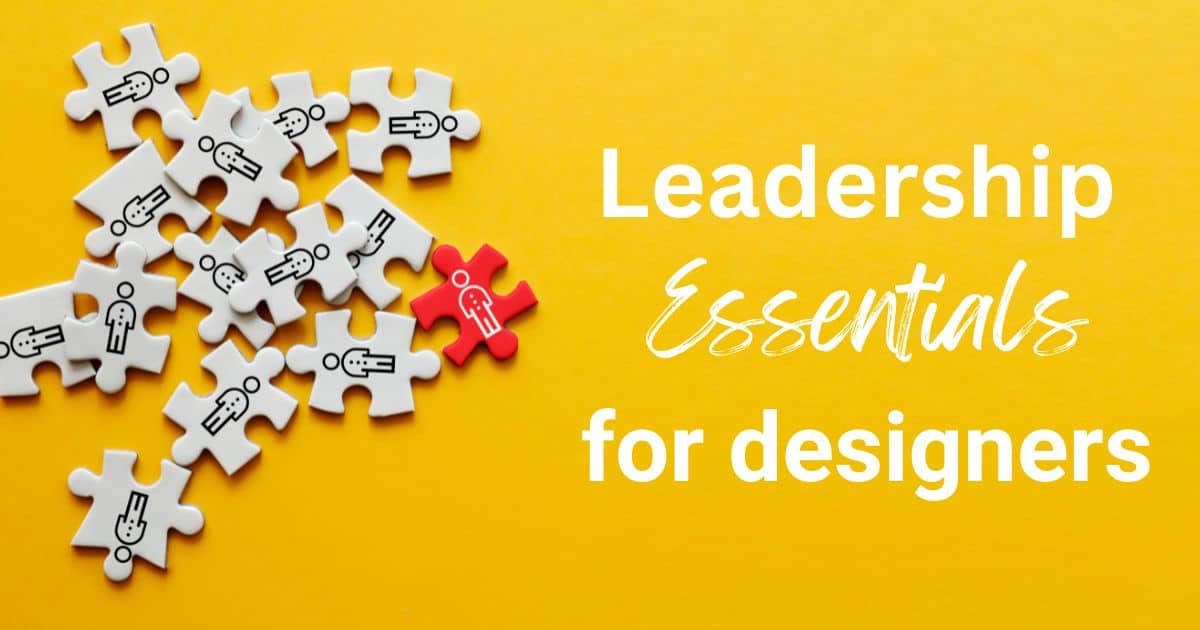Mamuna Oladipo is the VP of Product at Shopify, a leading, multinational e-commerce company. She has led product design, product marketing, engineering and more teams at companies like Kickstarter and Sony. In a conversation with Pragmatic Institute’s Director of Community Georgina Donahue, Mamuna discussed how Shopify prioritizes simplicity in its user experience, the importance of aligning cross-functional teams around one vision, articulating business impact in storytelling and more. Read excerpts from the conversation below and watch it in full here. (Editor’s note: This interview has been edited and condensed.)
Can you touch on your research process for delivering a powerful user experience at Shopify?
Having a sense of timeline or expectation for delivery is number one.
I will also want to make sure teams have a good understanding of the product as it stands today. Because you can’t start to solution if you don’t know what your users are using. So:
- Are those experiences generally good?
- What are the bad things?
- What takes a lot of time?
- What are their frustrations?
You want to take time to shadow and speak to your users. You want to do deep dives to understand what tools they are using in conjunction with yours.
And then I start to form out, what are some areas of focus or opportunity based on the findings. It could be that you’re trying to validate a problem, understand an opportunity, get a sense of directionality—where should we be going?
You can put together tests, wireframes and conversations with folks internally to help buy in. But it really points back to directionality. So, when you talk to the team about your goals, how you’re measuring success and where you all are trying to go—what is it that gets you there as quickly as possible, in an informed way? It’s always important to remain flexible in your approach because the things you may find along the way may change how you think about that thing that you expected to put out.
What does Shopify prioritize in its user experience? Can you share examples of how you have responded to user needs and surprised and delighted them?
Shopify prioritizes simplicity and experience first, so, not wanting to introduce complexity for the sake of complexity, just because a thing looks nice. And thinking about the rigor and understanding what is being introduced, especially to our admin… being mindful of that and also reduction in technical complexity. We don’t want to add to the platform if we don’t need to.
As I think about delightful experiences, some of the areas I lead are traditionally not exciting or sexy products. I have a sales tax team, and I love it. When I first came on board, I was like, “what am I doing? I know nothing about sales tax.” In fact, I hate doing taxes. But you think about that feeling of “ugh” and you think about the opportunity to really help alleviate someone’s “ugh.” And that’s where your opportunity is, not about how you turn that into a delightful experience.
At former roles I’ve had, it’s similar in terms of wanting to reduce complexity. Kickstarter’s very simple, clear, intentional. The goal is to get you to your area of interest as quickly as possible. But if you really peel the onion there, there’s a lot of content, projects, creators—and everyone wants to be seen.
When a backer first backs a project, a little bit of confetti goes off. It’s unexpected, but those little moments where you celebrate a thing can go a long way, because we can’t really be there to clap for a person.
How do you guard your user by making sure your team doesn’t go down the wrong path?
There was a product I was working on at Sony, and we had in mind what we’d always done. But as we started to do more research, I saw a clear opportunity. It didn’t align with the business, but it aligned with where the market or where the industry was moving towards.
And I had a choice: I could go forward with a path that was more familiar but probably wouldn’t serve the users in a meaningful, new, competitive way, or I could fight this uphill battle. I decided to fight that battle. In doing the research, I had all the data.
When you’re trying to do something different, it does take a level of understanding because you folks that you’re trying to speak to don’t have the same level of visibility into what you do. It’s important that you find ways to take those nuggets of information and pass those along while also conveying the bigger picture and opportunity.
You have to paint that picture of the promise. It’s going to be great, but here is how we get there. And here’s what we can expect when we get there. And here’s how we measure success. That storytelling is important to bringing people along with you on that journey.
How is your team structured at Shopify?
At Shopify, we have this concept of a multi-fecta, so that is design, product, data, marketing, engineering, finance…all of the leads sit at the top of an area. I have my org, there’s a multi-fecta, and then within that org, four to six teams, and within those four to six teams is another multi-fecta. So you have a director of design, then you have principal or manager-level folks that are at that next level. And then from that next level, the multi-fecta level, you now have ICs sprinkled around supporting different lines of products.
The purpose of this structure is to make sure that all functions have the same sense of responsibility and accountability for how decisions are made. Everyone feels like their voice is being heard; everyone is in the room hearing what and why things are happening.
I’ve worked at companies where I’ve had a smaller design team, so we’ve done sort of the agency model. It can work. The challenge I had there was that we were doing some deeper dives as the product matured and the designers didn’t have enough context on a number of the areas to be able to deliver deeper, richer experiences for users. I think it just depends on the culture and the speed at what you need to be producing content.
How do you make sure your product, development and design teams are all working in concert?
You have to have a strong vision. Without that vision, everyone has their own splinter of what the state could be in the end and what success looks like.
It is an important exercise to have that honest conversation to say: where do we all think this thing is going, and how are we measuring being successful? It’s important to have that alignment and then start to communicate that consistently, as loud as possible.
I think in a high-performing team, it shows when the VP, the director, whoever’s leading the organization is not in the room, and everyone else can clearly articulate what it means to win.
How does one tell that story of the vision and advocate for the work?
When my direct reports are coming to me with what they are trying to propose I look for them to have a clear sense of the why. And if they can articulate directionally where we’re going and why, that’s the first layer.
Then, having a clear sense of how you’re measuring your success. It’s not just, we’re going to go build these things and hopefully people will use it, people will adopt it or we’ll retain our users. But there’s a plan for that, right? We then can expect this because in our research, we saw competitively people in the space are doing this thing.
That is going to be key to clearly articulating why someone should invest right now.
What are the approaches to measuring success when you are looking at UX? Are there particular KPIs you’re looking at?
Recently, I worked with the teams to develop out the whys, the problems, the opportunities for what we’re trying to do, what we’re trying to accomplish, etc. Then I thought, in three years time, if we were to hit an adoption number, what would I be excited about? So I put those down. And then I started to forecast and say, to work from here to there, what does that look like? What would we need to do realistically?
And then I started to plug in initiatives or investments in those three to five years that we would need to make along the way to hit those areas. And then from there, what are some major milestones? What are some big unknowns? What segments do we need to focus on? A lot of the questions start to span out.
It’s important that you not only know how to speak with your peers, but how to speak up and how to speak down.
If you need to see a 50% adoption of one of your products in the next three years, you have to need some pretty radical change maybe. That helps to set for you how quickly you need to ramp or slowly, or if you need to de-scope or you need to change your expectation, whatever it is, this now helps you to set that.
What’s one particular skill that you recommend product and UX professionals develop further to advance their careers?
Communication. Especially in this remote world, it’s important that you not only know how to speak with your peers, but how to speak up and how to speak down.
I have, as a leader, failed multiple times in his front, because I have just said one thing flat. But you realize that different people have different ears; people listen or absorb information very differently. You might have to leave it in Slack or send an email. You might have to create spaces for one-on-one conversations or smaller group settings. You may have to have a big town hall. That awareness is just very important.
Another one to have is business understanding. It’s important that you understand how to speak about the impact of your product, not just to your users, but also to the business, right? You want to be able to talk about the expected return on investment.
How can we think one step ahead to deliver exceptional products our customers want to buy?
My perspective is it really begins with how a team is designed. If you don’t have a diversity of people on the team, it’s hard to have a diversity of thought and empathy, which then makes it hard for you to actually build and design for users.
I remember this one time when I was working at Sony we were redesigning the homepage of one of our sites and I did all this research and I spoke to all of the execs and we have these designs and everyone was like “oh, ah, this is beautiful.” And I shared it with our global teams and they were like, “this is so American.” I was like, what does that mean? It’s so interesting because we often think in a bubble.
But now as I design out my teams, I’m focusing on people who are in AMEA, Southeast Asia, throughout Africa. I want that mix because that perspective is important when you’re building for people across the globe.
Once you have that team, you can now start to push outside of your boundaries.
- What do we need to consider?
- How do we think about solving problems?
- What types of problems are we solving today?
- Where are we constrained in our thinking?
In one of my groups we always had a person whose role was to play devil’s advocate, to question our directions. And so having that person who’s consciously asking is that true, is that an assumption, should we be going down that path, and getting us to pull a thread a bit more is super helpful.
* * *
Looking to measure success, connect user-centered work to business impact and align with cross-functional team members around a vision? Enroll in Pragmatic Institute’s new course for designers, Business Strategy & Design.
Author
-

The Pragmatic Editorial Team comprises a diverse team of writers, researchers, and subject matter experts. We are trained to share Pragmatic Institute’s insights and useful information to guide product, data, and design professionals on their career development journeys. Pragmatic Institute is the global leader in Product, Data, and Design training and certification programs for working professionals. Since 1993, we’ve issued over 250,000 product management and product marketing certifications to professionals at companies around the globe. For questions or inquiries, please contact [email protected].
View all posts








